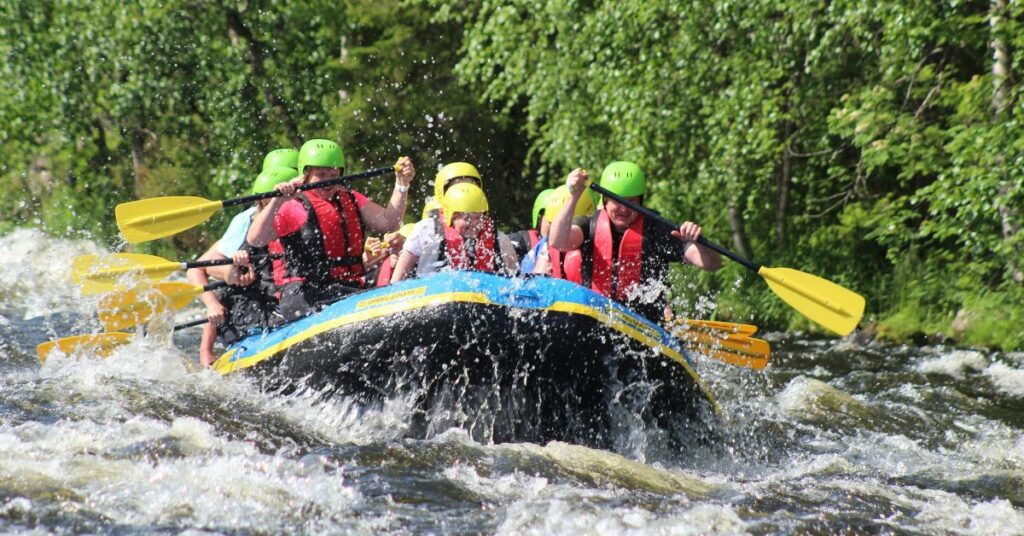For many travel business owners dipping their toes in PPC, this paid ad effort can feel like throwing ideas at a wall and hoping something will yield results. All while watching Google max out your budget every month.
Sometimes, you gain that gold-standard “first position” ranking, getting your brand above all your competitors. Other times, you can’t figure out why your ads are landing on the second page of Google (A.K.A. the digital graveward).
Pay-per-click ads (or Search Engine Marketing ads) are becoming increasingly strategic in the current business climate and not by chance. Google has been revamping its search layout, and with local results, snippets, and the new Google generative AI, organic results keep showing up lower and lower on the page. Strategic paid ads are the best way to ensure that your content is shown as high in Google search results as possible.
We have some tips that can transform your strategy from “I hope this works” to “This will work and only get better with time and optimization.” Here is an insider’s guide to building a successful PPC marketing strategy in the travel and tourism industry.
What Makes Paid Ads in the Travel Industry Different?
There is a longer purchase process than other projects.
We’re not asking people to buy a pair of pants or a tube of makeup – we’re asking people to consider spending potentially thousands of dollars and set aside days of their busy schedule to visit our destination. That takes much more consideration, research and deliberation than the average purchase. The entire purchase process of a travel-related purchase can be months or even over a year. That means you need to look at your purchase funnel differently; you may not see purchase conversions immediately. But that doesn’t mean you’re not engaging your audience!
You need several touchpoints to make an impact.
Your audience will need some convincing to add your experience or destination to their bucket list, even if they are actively searching for options. Ensure your information is on both organic and paid search results for all your relevant activities or offerings. If you keep popping up everywhere your audience searches, you’ll be at the top of their mind when they’re ready to reserve.
Powerful copywriting is imperative.
You need to describe your complete experience in a few words to convince your audience to learn more. You aren’t just selling a boat tour or a resort stay; you’re selling precious family time, a chance to reconnect with a partner or a life-changing adventure. Communicating what your audience can get out of your experience can turn heads and stick in their minds.

Building a PPC Strategy in the Travel Industry
Steps to Take Before Setting Up Your PPC Travel Ads
Mapping out PPC your strategy, goals and plan before you dive in can keep your eye on the ball and minimize back-tracking. Planning is the #1 thing you can do to start strong!
Understand Your Audience
As with every marketing effort, understanding your audience will guide your strategy. Identify the demographics you are trying to reach to build your plan, from keywords to copywriting.
Understand What Your Audience Is Searching
What is essential to your audience? What are they considering while they plan a trip? What do they need out of an experience? Understanding these questions will not only help you optimize your keyword strategy but also help you shape your messaging within the ad copy.
Build Relevant Landing Pages
A meaningful way to build effective PPC campaigns is to ensure you have the content resources you need to send your audience down a smooth marketing funnel. Sending your PPC traffic to the homepage can lose critical context for the viewer and may even lead to Google not prioritizing your ads. Poor ad relevance to your landing page costs you more per click, too. Building or finding thoughtful and relevant landing pages that elaborate on the ad’s theme can boost your ad quality, reduce your ad costs, and keep your audience engaged. That’s a win, win, win!
Pick Trackable Success Milestones
While a booking, reservation or purchase is the end goal, it’s not the only important goal. There are smaller milestones along the way that can also measure the success or productivity of your ads, like phone calls, website visits to multiple pages, downloading content, or using a contact form. Analyzing these conversions can also help you establish where people drop off in the purchase process and why.
Set Up Tracking
You need to set up tracking to see important data on your PPC activity! This should be a no-brainer, but regularly checking the status of your tracking can save you major potential headaches down the road, like realizing that one little mistake led to 6 months of lost data (yikes!). Google ads will automatically feed data to your GA4 Google analytics account for Paid Search, and Display clicks, etc. You will, however, want to set up additional custom events (like contact form submissions) so that you can see whenever your PPC ads generate that event.

Tips for Building Your Travel PPC Strategy
Leverage Conversion Copywriting
There is a time and a place for cute, descriptive or punny writing, and your PPC ads are not it. Use your SEO strategy and conversion copywriting to ensure the minimal copy space is used to engage your audience and show up on the right queries.
For example, switching your title from
Have Fun in the Sun on Fort Myers Beach Boat Tours!
to
Fort Myers Boat Tours | #1 on TripAdvisor | Family-Friendly
This may seem less creative, but it includes much more important info that can impact whether someone books your trip. And, most importantly, the title contains the top keyword search terms that your prospective customers are using to find products (like yours) that they are searching to find out about.
Leverage All Text Opportunities
Don’t leave anything on the table! From broad descriptions to extensions to site links, several additions to your campaign create a more complete and aesthetic ad. These additions also create even more opportunities to engage your audience by providing multiple links or a direct phone number.
Google is Leveraging AI, and You Should Too
Don’t know where to start in building your keyword or copy strategy? AI is a great place to start! The Google PPC platform uses AI to set the right bids, reach the right searches, and create the most relevant ad for consumers. You can use it to start refining how you want your ads to look, too. For example, you can use ChatGPT with the following prompt.
“Imagine you are a PPC expert in the travel industry. You are building a PPC strategy for a mid-sized backpacking and trekking company in Yosemite National Park. You need to come up with 30 descriptions that are under 90 characters that prioritize that the treks are guided and family-friendly, take you up to Half Dome, and manage all camp meals and trip details.”Once it spits out some examples, you can refine the AI output with comments like “shorten the descriptions” or “Make the descriptions a little more casual.”
PRO TIP: with AI you must review what spits out very carefully. Generative AI can make up stuff that is not true. Non-generative AI pulls info from existing resources, and that may or may not be true either. Consider AI like your hard working intern, smart but requires constant and complete supervision.

Use your PPC Strategy to Complement Your SEO Strategy
Ensure your PPC and SEO strategies go hand-in-hand to optimize your search engine presence.
We all know that SEO is a critical part of digital marketing and one of the more difficult, changing and complex efforts to master. Great SEO is mission-critical, but you can’t guarantee you’ll be the #1 organic result for every valuable search term.
That’s where your PPC strategy comes in.
If you have important keywords you want to target effectively but aren’t doing so organically, you can leverage PPC to create a presence at the top of the page.
Use Visual Creatives
A picture is worth a thousand words – which is incredibly helpful when you have a 90-character text limit! Google announced that using images in ads can lead to an average 6% increase in click-through rate. This effort also boosts memorability, shares more information about the trip, and helps paint a clearer vision of your unique experience in the heads of everyone considering your offerings.
How To Analyze and Optimize Your Travel PPC Campaign
What a Good Campaign Looks Like
Here’s a quick breakdown of what a good PPC campaign looks like after gaining some data:
- It has a high-quality score in the ads platform
- It shows up as the first result for your targeted queries
- It has a high Click Through Rate (3-5%+)
- The Cost Per Click is reasonable
- It generates quality traffic to your site
- It measures conversions off of that PPC-generated traffic
- The Return On Ad Spend is 3x or more
If your ads meet most or all of these metrics, you have a great ad campaign!
Managing Budget Increase Requests
The Google Ads platform often tells you something like, “If you increase your spending to $40 per day, your click-through rate should increase by 2%.” Take these requests seriously, but also take them with a grain of salt. If you are confident in the strength and quality of your campaign, a budget increase could be a great decision. If you’re hoping that a bigger budget will save a less-than-impressive campaign, you need to refocus your efforts on your strategy before you throw more money at the effort. Remember, Google will ALWAYS take your money, whether your ads are effective or not.
Review Your Ads
Review your campaign at an ad-specific level to see trends in ad content and what messages engage your audience. Google’s AI is robust enough to tell you what specific details engage your audience the most, so use that data to elaborate on the powerful details!
Consistently Refresh Your PPC Content
As much as we wish a PPC strategy could be a “set it and forget it” effort, it requires constant edits and updates. From seasonal messages to current availability to new trips or canceled services, there are many ways for your ads to be outdated or inaccurate. Competitor behavior is important to monitor, and prepare to address if your ads are suddenly slipping to a competitor. Is your location targeting too broad? Or too narrow? Monitoring your results will reveal all this and more.
On top of that, Google will regularly suggest ways you can optimize your campaigns. Some of this works, and some of it only makes Google more money. Assess your campaign details, product content, and Google’s algorithm framework carefully to understand what will help or not. Make sure you have a consistent schedule to check your strategy, update your content and review Google’s advice.
Schedule a Consultation
Want more details on creating a successful PPC Marketing strategy for your travel destination or business? Reach out to our team! We have decades of experience creating effective PPC campaigns for travel and adventure companies and destinations.


